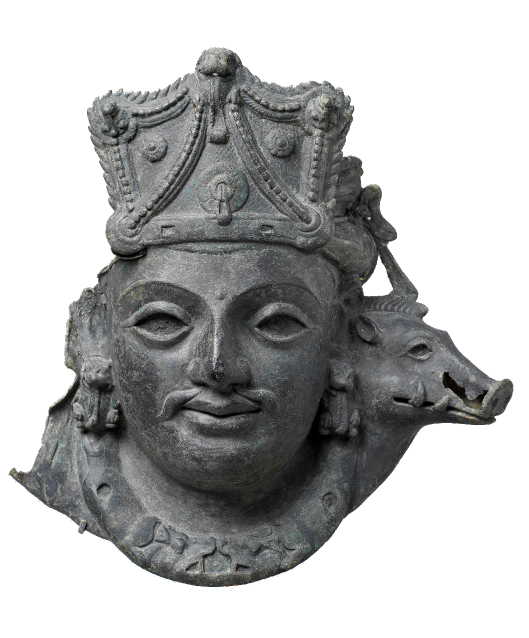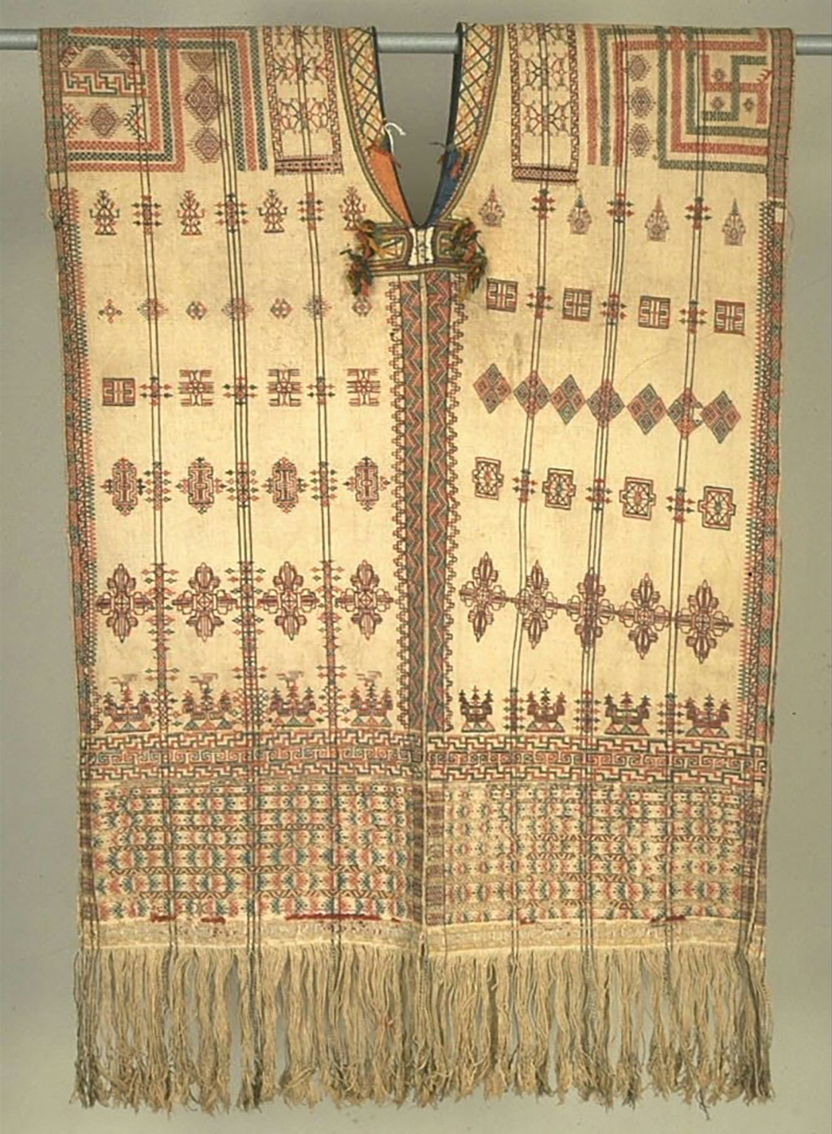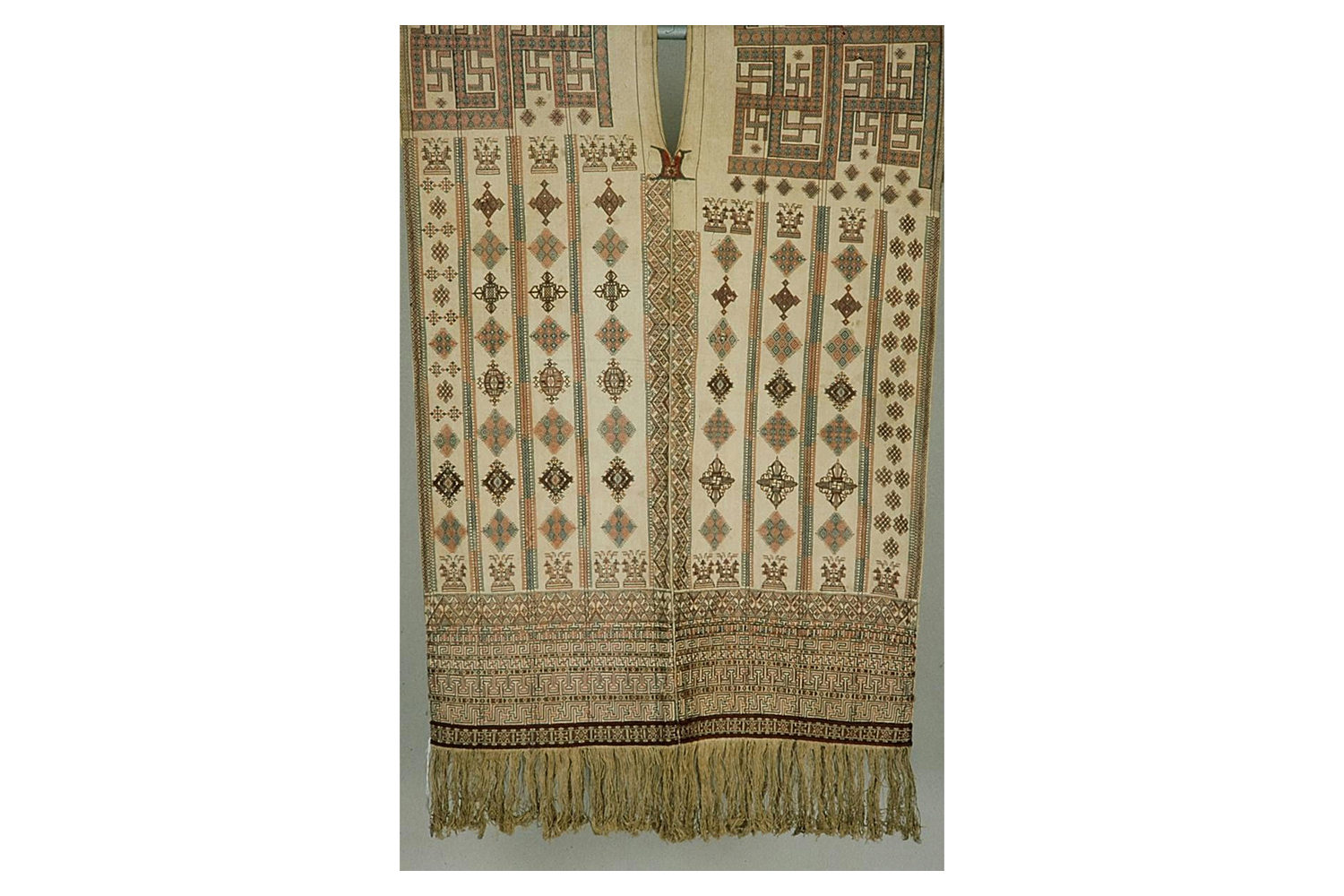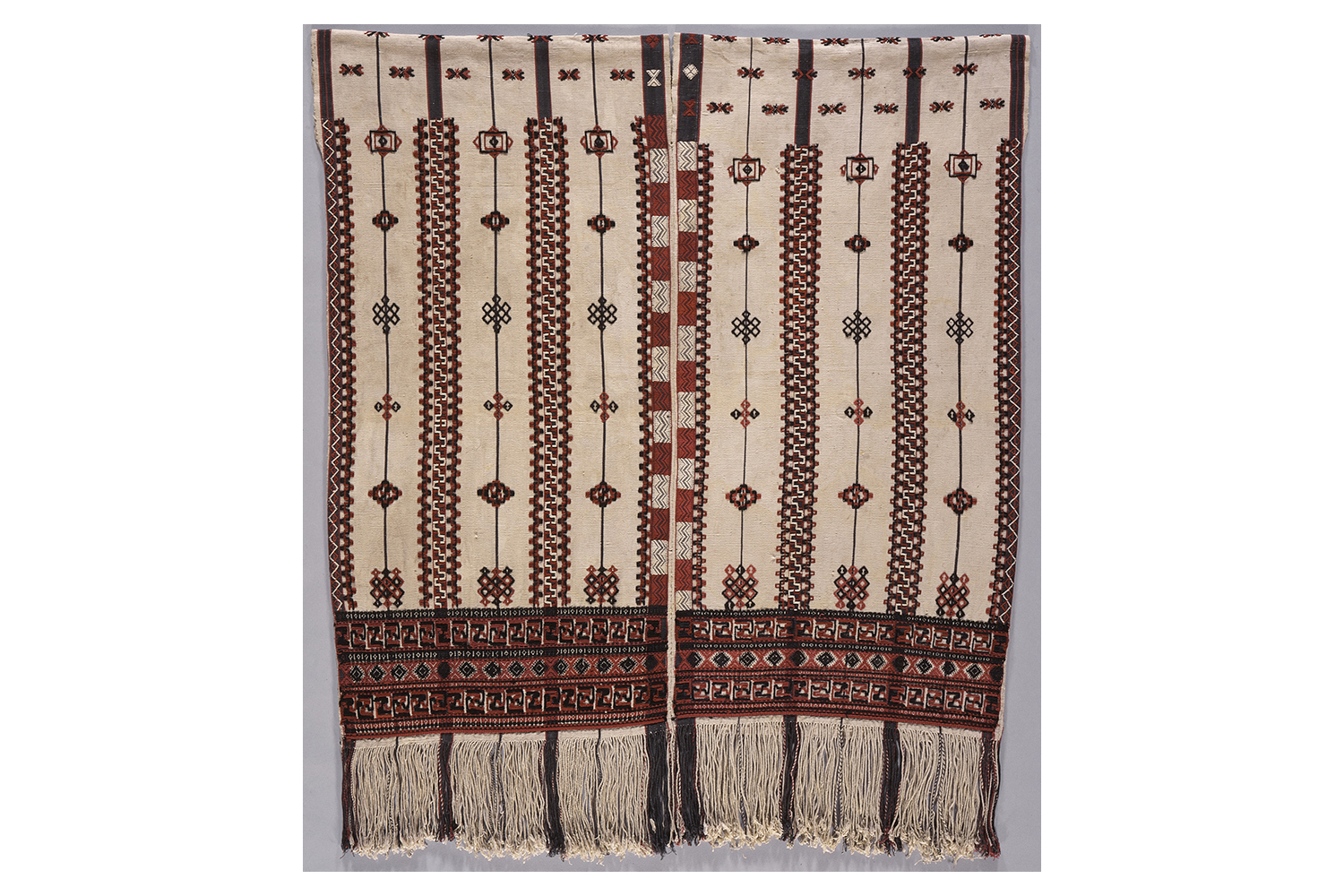ARTICLE
Kushung
While the rest of the garment is sparsely patterned, the bottom section of the kushung often features a wide and particularly dense border known as takshing thrima or khodang — using a form of patterning that is not known to appear in any other Bhutanese textile. Organised in horizontal bands of varying widths, it comprises sets of repeating motifs woven using multiple supplementary weft threads of dyed wool or nettle that are thicker than those of the ground weave, creating raised, embroidery-like patterns. The garment is finished with a fringe about 15 to 25 centimetres long, plied from the warp threads, which is thought to have served the practical purpose of warding off insects while working in the fields.
Kushungs are little known across Bhutan except in their native region, where too they are largely restricted to temples. Here they adorn some deities, and are worn by ceremonial dancers in pre-Buddhist rituals, such as the Bulli Mani festival and a festival dedicated to the Bon deity; a similar archaic tunic called the shingkha, darker and thicker than the kushung, is also worn during these rituals. Some are also preserved in homes as family heirlooms along with other valuables in a yanggam, or ‘box of happiness’. These articles are brought out once a year to be blessed by lamas as part of a prosperity ritual known as rimdro.
Some surviving kushungs are part of private collections, while some others are housed in museums, both in Bhutan — such as the Textile Museum in Thimphu and the Ogyen Choling Museum in Bumthang — and around the world, including the Asian Art Museum in San Francisco, the Los Angeles County Museum of Art (LACMA) and the Philadelphia Museum of Art.
Bibliography
Altmann, Karin. Fabric of Life: Textile Arts in Bhutan – Culture, Tradition and Transformation. Berlin: De Gruyter, 2016.
Asian Art Museum. “Tunic (Kushung).” Google Arts & Culture. Accessed January 11, 2024. https://artsandculture.google.com/asset/tunic-kushung/2wFBokttF7Kdxw.
Kean-Kim, Joseph Lo. “Markers and Meaning of Authenticity: Narratives of Mosuo, Bhutan and Harris Tweed Weavers.” Heriot-Watt University Textiles and Design 5 (2015): 32–53.
Mandala Collections. “An Account of Ngang Lhakhang Rabney.” August 23, 2018. Accessed January 11, 2024. https://av.mandala.library.virginia.edu/video/account-ngang-lhakhang-rabney.
Myers, Diana K. “Costume and Ceremonial Textiles of Bhutan.” The Textile Museum Journal 26 (1987): 25–54.
Myers, Diana K., Michael Aris, and Françoise Pommaret. From the Land of the Thunder Dragon: Textile Arts of Bhutan. Edited by Diana K. Myers and Susan S. Bean. London: Serindia Publications; Salem, MA: Peabody Essex Museum, 1994.









